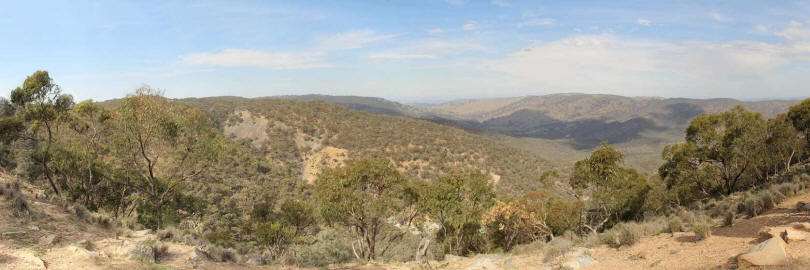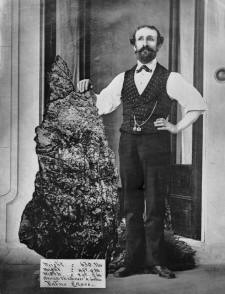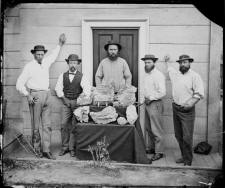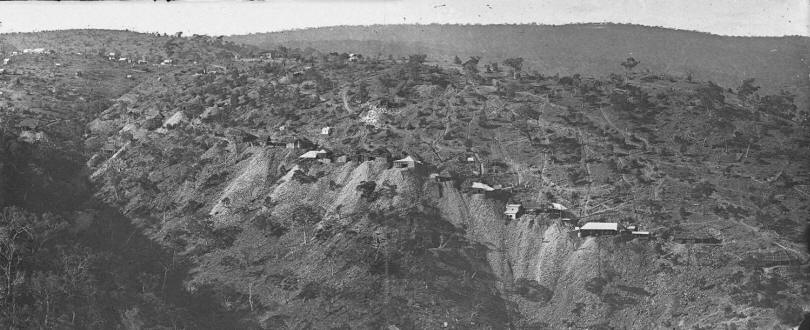|
Hawkins Hill during the peak of the gold rush The Hill End-Tambaroora Gold Field was one of the richest gold mining areas in NSW, and the first reef mining area in Australia. Surface gold was won from Hawkins Hill in 1855 and reef claims were worked along the right bank of Golden Gully from 1859. In 1855 gold-bearing quartz was worked on the surface of Hawkins Hill by the Rowley brothers, but the existence of a reef extending to depth was discovered by Daddy Nichols, a Cornish miner. This vein was first worked in 1860. In 1870 a five head stamper was erected by Mr Pullen at Hill End. Soon after he erected a modern 15 head stamper near the Hill End Post Office. There was a slump in the early
part of 1871, but fresh finds towards the end of the year led to a
bigger gold rush. |
||
 Hawkins Hill from Beaufoy Merlin Lookout |
||
|
|
|
|
 |
||
 |
 |
|
| Holtermann nugget | Holterman & Beyers | Rob's I wish nugget |
| back to IN OUR BACKYARD | ||

